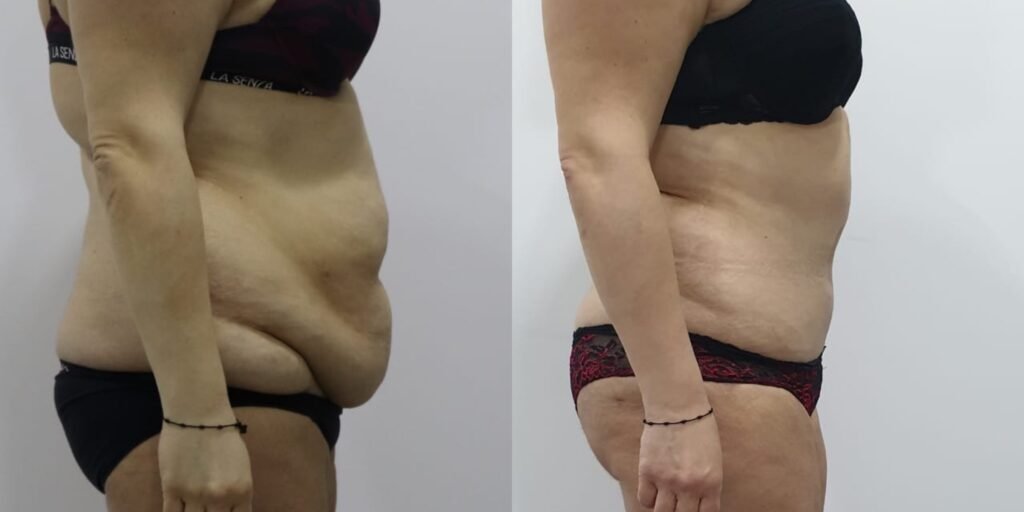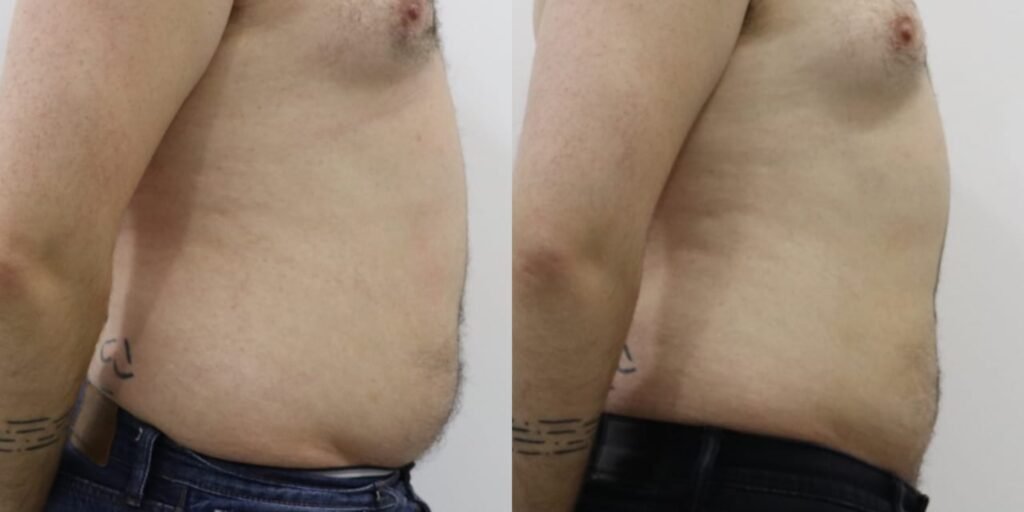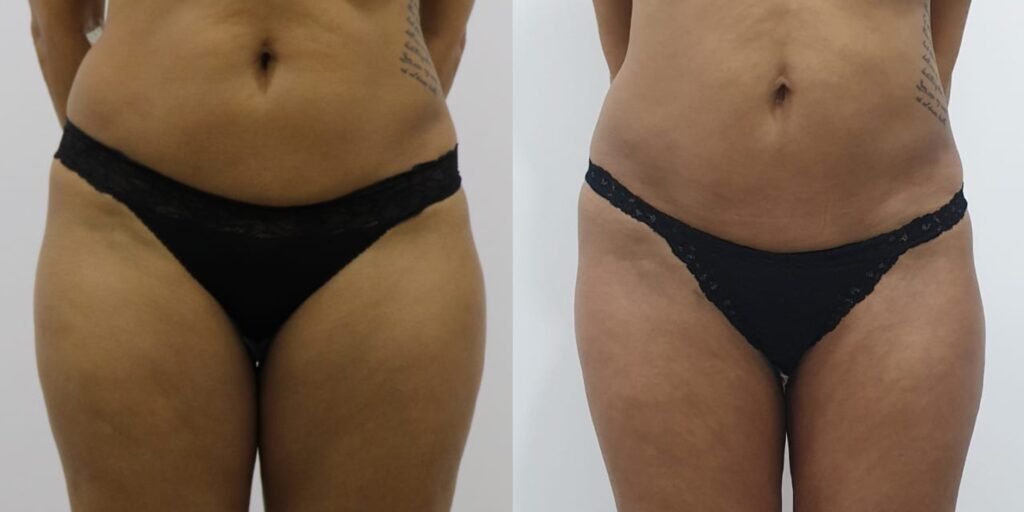What is Liposuction?
Liposuction, also known as suction-assisted lipectomy, is a cosmetic surgical procedure designed to remove unwanted excess body fat. Liposuction involves separating and removing small areas of fat that are usually resistant to exercise and a healthy diet.
In addition to liposuction, our recommended surgeons specialise in the BodyTite protocol which ensures that the skin remains tight, avoiding any post-liposuction sagging usually associated with fat loss.
Treatments
1Results
12 weeksSurgery time
1-3 hoursHospital time
3-6 hoursDowntime
1-2 weeksMobility
24 hoursWashing
ImmediatelyOff-Work
7 daysExercise
2 weeksFull recovery
12 weeksLiposuction – Before and After Photos














What is Liposuction for?
Doctors perform liposuction treatments in the following areas:
- Abdomen (upper and lower)
- Forearm, upper arm, upper arm fold
- Buffalo hump (between the neck and the back)
- Back, sacrum and flanks
- Buttocks, outer thighs, back thighs
- Inner knees, calves, ankles
- Neck & jawline (Jowls)
- Breasts
How does Liposuction work?
During the procedure, your surgeon will first mark the areas of your body where fat will be removed. The surgeon will then inject a solution containing anaesthetic and medicine, to reduce blood loss, bruising and swelling.
Our selected surgeons predominantly use the PAL (Power Assisted Liposuction) technology, as they find it to be the most effective in breaking down and extracting fat. However, they have extensive training in using other liposuction technologies including Vaser and BodyTite.
The PAL device, clinically approved and proven to significantly reduce bruising, is an electrically powered cannula designed to allow easier penetration and removal of fatty tissue through vibrations cycles, increasing tissue shrinkage and laxity.
Following the PAL, a small incision will be made to insert a suction tube in order to remove fat. During the manual fat removal, your doctor will also drain any excess body fluids.
The procedure usually takes one to three hours, depending on the breadth of the targeted area and amount of fat.
Surgeons perform liposuction under sedation, thus ensuring a painless procedure. However, if this is of any concern, other options or treatments are available and can be discussed during your consultation.
What is the Typical Recovery Time after Liposuction?
A detailed outline of your post-surgery recovery and timeline will be thoroughly discussed before and after your procedure, and a follow-up assessment will be arranged. However, it is invaluable that you take time to rest and recover from your surgery. In order to contribute to your successful and safe healing, you should take the following time-frames under consideration:
2-3 days: You can return to showering, although baths are normally discouraged.
7-10 days: Stitches and sutures are removed by your surgeon. You can return to work and resume normal activities.
2 weeks: Any bruising, redness and swelling would have subsided.
4-6 weeks: You are no longer required to wear your post-surgery compression undergarment. You can safely resume normal activities as well as contact sports and physical activities. Initial results are visible.
6-12 months: The final outcome of your procedure may take several months to show, but the healing process is well underway.
How Much Does Liposuction Cost in London?
Liposuction procedures are quoted depending on the number and size of areas being treated. The estimated cost of liposuction from the surgeons we work with starts from £3,900 (1 small area), £4,500 (1 large area) £5,900 (2 large areas), and £7,900 (3 large areas). Any additional areas will be priced separately. Combining the BodyTite protocol would be priced separately and according to the patients needs and concerns.
Costs are fully inclusive, thus your quoted price includes your surgeon’s fee, theatre fee, anaesthetist, sedation, prescriptions and compression garments. It also includes all aftercare follow-ups.
FAQ
How do I know if liposuction is suitable for me?
For women, liposuction is more commonly used around the stomach, hips and thighs. Men often use liposuction to get rid of chest fat and define their torso.
If one or more of the following applies to you, liposuction may be right for you:
1. You have stubborn, excess fat deposits on your hips, belly, thighs, neck or chest, that do not respond to diet or exercise.
2. Certain areas of your body are not in proportion to the rest of your figure. The ideal liposuction patient has localised fat deposits, and good skin texture and tone.
It is also important to have realistic expectations regarding liposuction results. For example, liposuction is designed to target fatty tissue only, not to improve the appearance of loose skin. For patients wishing to address excess skin, other body contouring procedures, such as a tummy tuck or body lift, may be more suitable.
Finally, although liposuction can improve your shape and make you appear thinner and fitter, it is not a weight-loss surgery. While some overweight patients can benefit from the reshaping effects, the most satisfied patients tend to be happy with their weight prior to surgery.
Can a tummy tuck and liposuction be done simultaneously?
The short answer is yes. However, your tailored treatment plan will be discussed with you during a 1-to-1 consultation with your surgeon.
Does liposuction work and how long does it last?
Liposuction is a permanent removal of unwanted excess fat deposits from the body. When you lose weight through diet and exercise, your fat cells shrink in size, but they do not disappear. Liposuction is therefore excellent for addressing stubborn fat deposits, unresponsive to lifestyle changes.
What can I expect after surgery?
Immediately after liposuction, the area treated will be bruised, swollen, and slightly numb to the touch. You will be given a compression garment to reduce the swelling and improve long-term results. This should be worn for a minimum of two weeks. Most patients can shower after two to three days but bathing is normally discouraged and the compression garments should not be worn during showers.
Post-procedure pain is not significant. According to our recommended doctors, about half of their patients do not need painkillers and others usually treat pain with over-the-counter medications, such as paracetamol.
In most cases you would be able to start normal daily activities and exercise as soon as you are comfortable, usually when the stitches are removed (7-10 days post-surgery). Most patients return to work after a week. Infection is very rare.
When will I see results?
Liposuction results vary according to the individual. You will likely see some results immediately after surgery, but post-operative swelling and bruising will disguise the full effects. Most people see results from 6 weeks and final results 6-12 months after the operation.
Does liposuction leave scars?
Liposuction uses tiny incisions, leaving minimal scars. To minimse scarring as much as possible, doctors use fine cannulas and intrinsic techniques that allow them to operate without the risk of scarring.
Our recommended specialists have extensive experience with the procedure and use as few incisions as possible. The incisions necessary for liposuction should not deter you from treatment. You can discuss this concern during your consultation.
Is there a maximum BMI requirement for liposuction?
During your consultation, a surgeon will determine whether your BMI is suitable for the surgery. In general, liposuction is usually recommended for patients who have a BMI that is 35 or under.
What are the potential risks?
Your chosen surgeon will inform you of the full risks of the procedure during your consultation. There are risks associated with liposuction: numbness (immediately after surgery); possible infection (rare); internal organ punctures (extremely rare); kidney or heart problems (extremely rare); pulmonary complications (extremely rare); and anaesthesia-related mortality (extremely rare).
